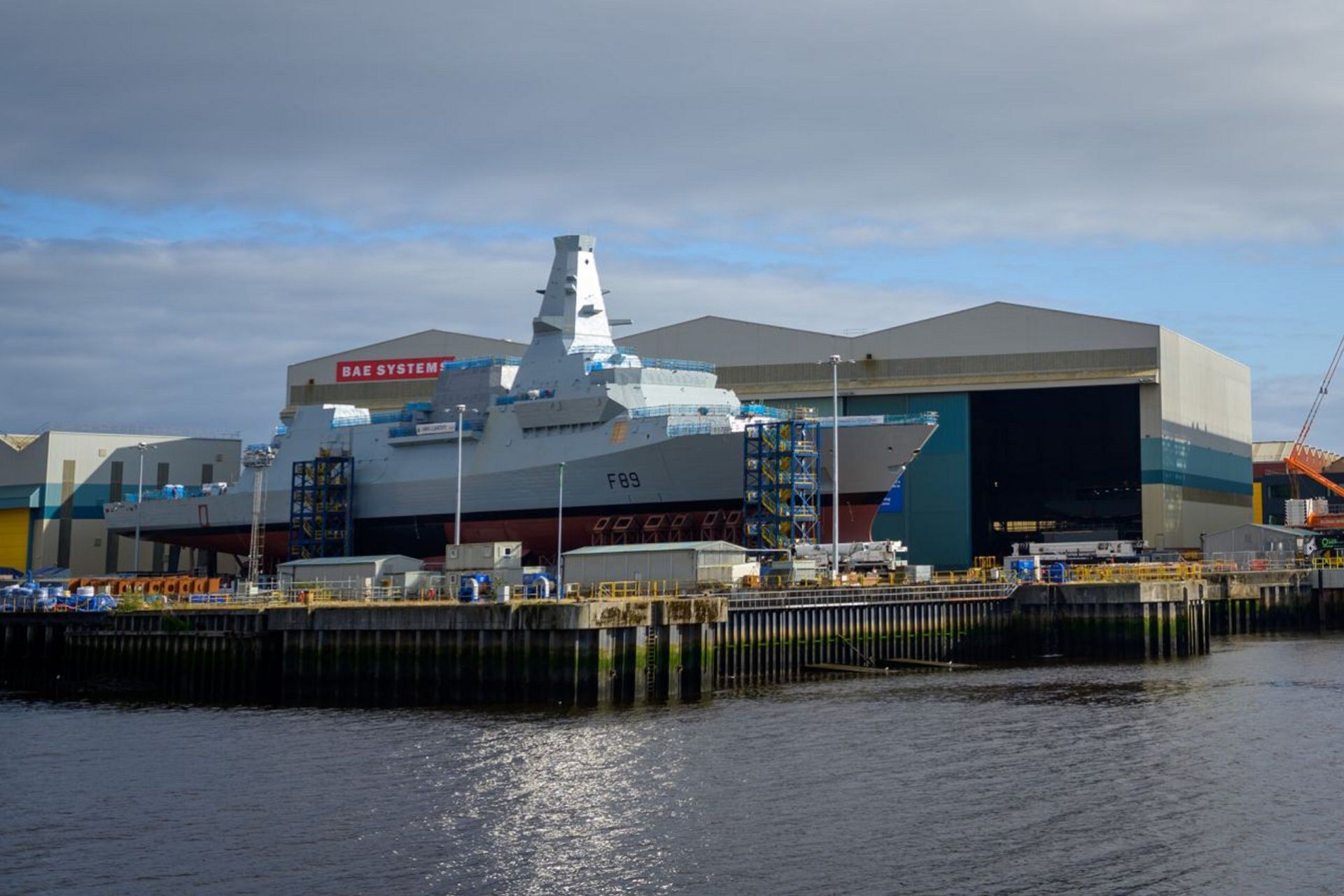Breaking News
HMS Cardiff makes historic first water entry as Type 26 frigate construction progresses.
According to information published by BAE Systems on August 30, 2024, HMS Cardiff, the second of eight Type 26 City Class frigates under construction for the Royal Navy, has entered the water for the first time. The vessel was transferred from the shipyard slipway to a barge by a team of engineering specialists, initiating the float-off process.
Follow Army Recognition on Google News at this link

Type 26 frigate HMS Cardiff. (Picture source: BAE Systems)
The ship has now departed the Govan shipyard on a barge and is being towed to a deep-water location in the West of Scotland. Once at this location, the barge will gradually submerge over several hours, allowing the frigate to float independently for the first time.
Following this, HMS Cardiff will return to the Scotstoun shipyard for further outfitting and the installation of its complex systems before moving on to testing and commissioning phases.
The float-off method used is a modern, efficient, and low-risk way for a ship to enter the water, a shift from the traditional practice of dynamic launches down a slipway. This method was also employed for the first Type 26 frigate, HMS Glasgow, and several Offshore Patrol Vessels.
The construction of the Type 26 frigates involves initial assembly at the Govan site, where structural units are fabricated and then joined before launch.
For the remaining vessels in the series, including HMS Glasgow, HMS Belfast, and HMS Birmingham, further stages involve outfitting at Scotstoun, where systems are installed and preparations for operational deployment are completed. The first ship of this class, HMS Glasgow, is projected to enter service by 2028.
About the ship
The HMS Cardiff is a ship with a displacement of 6,900 tons, reaching over 8,000 tons when fully loaded. The ship measures 149.9 meters in length and has a beam of 20.8 meters.
It is powered by a CODLOG (Combined Diesel-Electric and Gas) propulsion system that includes a Rolls-Royce MT30 gas turbine, four MTU diesel generators, and two electric motors. This configuration allows the vessel to exceed speeds of 26 knots and achieve a range of over 7,000 nautical miles using its electric motor drive.
The vessel's standard crew complement is 118, but it has the capacity to accommodate up to 208 personnel. For detection and tracking, HMS Cardiff is equipped with advanced sensor and processing systems, including the Type 997 Artisan 3D radar, Kelvin Hughes Ltd SharpEye navigation radar, Sonar 2087 towed array sonar, Ultra Electronics Type 2150 bow sonar, and SCOT-5 satellite communications.
In terms of armament, the HMS Cardiff is equipped with a range of weapons systems, including 48 Sea Ceptor anti-air missiles housed in 12 quad-cells, a 24-cell strike-length Mark 41 Vertical Launching System capable of deploying Tomahawk, ASROC, and LRASM missiles, and a variety of guns, such as a BAE 5-inch 62-caliber Mk 45 naval gun, two 30 mm DS30M Mk2 guns, two Phalanx CIWS, Browning .50 caliber heavy machine guns, and four general-purpose machine guns.


























